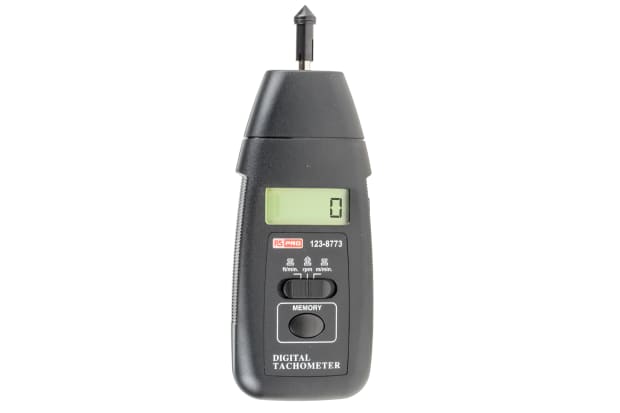The Importance of a Tachometer in Keeping An Eye On Engine Rate and Efficiency in Automotive Applications
In the realm of automobile design, the tachometer stands as an essential tool in the driver's arsenal, providing a straight home window right into the inner functions of a lorry's engine. Past its feature as a plain gauge of revolutions per minute (RPM), the tachometer works as a vital device for enthusiasts and professionals alike, providing real-time insights right into engine efficiency and health. Understanding the value of this device goes beyond surface-level observations, delving right into the complex connection between engine rate, power output, and general driving experience. As we discover the multifaceted duty of the tachometer in automobile applications, a much deeper gratitude for its impact on automobile dynamics and efficiency begins to emerge.
Relevance of Checking Engine RPM
Keeping an eye on engine RPM, or revolutions per min, is a crucial element of automobile upkeep and performance assessment. Engine RPM straight associates with the speed at which the engine's crankshaft rotates, suggesting just how swiftly the engine is running - tachometer. By keeping an eye on RPM, mechanics can assess the health and wellness of the engine, identify possible concerns, and fine-tune performance. An unusual RPM reading may signify issues such as engine misfires, faulty spark plugs, or concerns with the fuel shipment system. Regularly high RPM analyses might suggest hostile driving practices or the need for a greater gear change to boost fuel effectiveness.
In addition, keeping track of engine RPM is necessary for efficiency assessment in racing and high-performance cars. In recap, keeping track of engine RPM is not only crucial for spotting concerns however additionally for optimizing engine performance in different vehicle applications.

Benefits of Real-Time Information
In automobile applications, real-time information plays a crucial role in supplying immediate understandings into the performance and problem of the automobile. By continually monitoring numerous criteria such as engine speed, temperature level, gas usage, and extra, real-time information supplies many benefits that add to improved efficiency and security on the roadway.
In addition, real-time data helps with efficiency optimization by offering instant responses on driving behaviors and engine effectiveness. Vehicle drivers can adjust their habits in real-time based on this info to attain better gas economy and extend the life-span of their vehicle.

Furthermore, real-time data plays a vital function in modern automobile diagnostics, allowing technicians to rapidly detect and attend to breakdowns. This leads to minimized downtime, lower upkeep prices, and inevitably, enhanced general automobile reliability and longevity (tachometer). By utilizing the power of real-time data, automotive stakeholders can make enlightened decisions that positively impact both the performance and long life of the car
Effect On Gear Shifts
Efficient equipment shifts in auto applications substantially influence general performance and driving experience. The tachometer plays a vital role in maximizing equipment shifts by offering real-time engine rate data to the driver. When approaching the redline on the tachometer, read this it signifies the driver to upshift to avoid over-revving the engine and creating prospective damage. On the other hand, downshifting at the appropriate minute can assist preserve the engine in its power band, guaranteeing receptive velocity when required.
In addition, the tachometer help in accomplishing smoother gear transitions, especially in manual transmissions. By keeping an eye on engine rate, chauffeurs can carry out equipment shifts at the ideal RPM array, minimizing jerking activities and minimizing endure the transmission parts. This precision in gear adjustments not just improves driving convenience however also adds to fuel efficiency.
Enhancing Gas Efficiency
Offered the crucial function the tachometer plays in enhancing gear shifts for performance and engine health and wellness, it straight adds to maximizing gas efficiency in vehicle applications. By supplying real-time feedback on engine rate, the tachometer aids drivers in preserving the most effective RPM array for fuel economy. When chauffeurs consistently monitor the tachometer and change their motoring habits appropriately, they can prevent unneeded fuel consumption triggered by over-revving or lugging the engine.
Additionally, the tachometer aids chauffeurs determine the most fuel-efficient gear to be in at any type of given minute, protecting against the engine from functioning more difficult than needed. In conclusion, the tachometer serves as a useful tool in boosting fuel efficiency by promoting optimal driving behaviors and recognizing areas for enhancement in the lorry's efficiency.

Optimizing Engine Longevity
The tachometer's role in keeping an eye on engine speed and performance contributes in ensuring the durability of automobile engines. By using the tachometer efficiently, vehicle drivers can enhance engine durability through mindful RPM management. Constantly revving an engine you can try here too expensive can bring about extreme deterioration on vital elements, such as the pistons, valves, and bearings. With time, this can cause reduced engine performance and potential breakdowns. Monitoring the tachometer permits vehicle drivers to remain within the advised RPM range for their car, stopping unnecessary stress on the engine and extending its life expectancy.

Conclusion
Finally, the tachometer plays a vital function in keeping track of engine rate and performance in auto applications. By offering real-time data on RPM, it enables effective equipment changes, enhanced gas efficiency, and made best use of engine durability. This device is necessary for keeping ideal engine efficiency and making sure the total performance of a car.